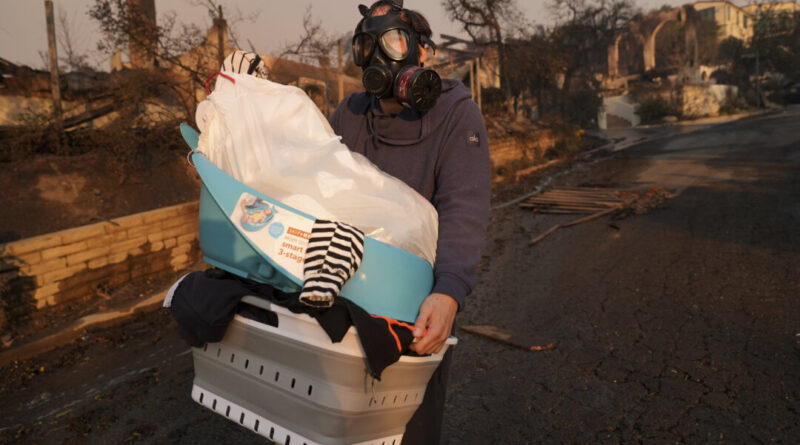Experts Caution That Ash from Los Angeles Wildfires May Be Toxic
Toni Boucher was overwhelmed with nausea upon encountering the scorched remnants of her home and neighborhood following this month’s devastating wildfires in the Los Angeles area. Now, she grapples with the question of whether it’s worth returning to search through the ruins for her grandmother’s wedding ring.
Her concern goes beyond the emotional toll of witnessing the destruction in Altadena, where Boucher, 70, has resided for many years. She is also apprehensive about potential health hazards.
“There’s talk about asbestos, lead, and all the substances that have been burned in the homes, the dangers they pose,” Boucher remarked.
Experts caution that the fires triggered intricate chemical reactions in various materials—such as paint, furniture, building elements, vehicles, electronics, and other possessions—transforming them into potentially hazardous ash that necessitates protective equipment for safe handling. This ash may contain toxic substances like lead, asbestos, arsenic, and newer synthetic materials.
“Ash isn’t just ash. Consider what’s in your garage or home. What are your furniture and appliances made from? What about your house?” posed Scott McLean, a former deputy chief with the California Department of Forestry and Fire Protection’s communications bureau. “Many items consist of petroleum products and various composites that can be extremely hazardous when they burn.”
This issue becomes particularly critical when individuals begin to sort through the damage caused by the fire. Research indicates that those engaged in recovery efforts in ash-affected regions may face health risks from inhaling whatever particles are present.
Even seemingly harmless substances typically found in household items—like titanium dioxide in paint or copper in pipes—can generate more reactive compounds after a fire, according to Mohammed Baalousha, a professor of environmental health sciences at the University of South Carolina, who analyzes ash samples to understand the materials present and their transformations from wildfires.
Researchers are still working to determine the exact health implications of these chemical changes, not just in California, but in regions like Maui and other wildfire-affected areas.
Maui residents were prevented from accessing contaminated zones for nearly two months, yet they remain concerned about long-term health effects. In California, authorities are restricting residents from returning to numerous sites for at least a week while they restore utilities, execute safety protocols, and search for missing individuals, as stated on Los Angeles County’s recovery website.
Some chemicals correlate with cardiovascular disease and diminished lung capacity. Additional negative health impacts may arise from inhaling more mobile and toxic variants of arsenic, chromium, and benzene. For instance, exposure to magnetite—formed when fire consumes iron—has been associated with Alzheimer’s disease.
“It might take a considerable amount of time to unravel all potential health effects of these particles” due to the multitude of complicated chemical reactions and substances still requiring investigation, Baalousha remarked.
Researchers draw parallels to various health issues linked to debris from the September 11, 2001, attacks.
“I often think about the individuals who rushed into the World Trade Center on 9/11 and were there for only a short duration regarding their exposure,” said Jackson Webster, a professor of civil engineering at California State University, Chico, who studies the aftermath of fires. “Yet, there’s been an uptick in numerous illnesses and health concerns.”
Baalousha also expressed concern over the disposal of the resulting waste. Some potentially dangerous materials might contaminate drinking water or even enter the ocean, harming marine ecosystems. Experts in Hawaii are currently examining this issue following the catastrophic fire in Maui last year.
While research efforts continue, California residents returning to their homes should prioritize their safety, he emphasized.
“We understand that emotions and feelings are intense, which can lead to lowering one’s guard, but that shouldn’t happen,” Baalousha advised. “It’s essential to be cautious and equipped—at minimum, wear an N95 mask and gloves—for your safety. You’ve lost your belongings, but you should not jeopardize your health in the long term.”
By Melina Walling




